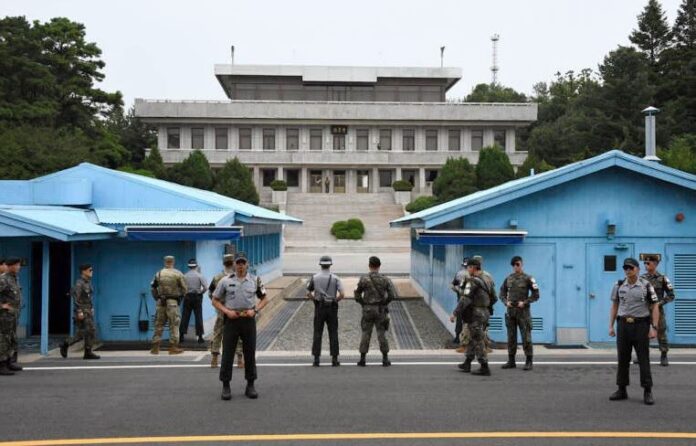Amid heightened military tensions on the Korean Peninsula, South Korea is closely monitoring a different kind of threat along its heavily fortified border: malaria-carrying mosquitoes. These devices, stationed near the Demilitarized Zone (DMZ), operate around the clock to detect and track mosquitoes potentially carrying malaria across the frontier from North Korea. Despite South Korea’s advanced healthcare system, the country has struggled to fully eradicate malaria, largely due to its proximity to the isolated North, where the disease remains prevalent.
This health concern comes at a time of escalating military developments in North Korea. Recently, North Korean leader Kim Jong Un oversaw the test-firing of a 240mm multiple rocket launcher equipped with a new “guiding system,” according to state media reports. This test is part of Pyongyang’s ongoing efforts to upgrade its arsenal, including weapons capable of striking Seoul.
Also Read: Zelenskyy to Present War-Ending Strategy to Biden, Harris, and Trump
The test follows North Korea’s announcement three months ago that it would equip its military with a “new” 240mm multiple rocket launcher (MRL). Analysts believe that North Korea, having recently strengthened military ties with Moscow, might be ramping up the production of artillery and cruise missiles, possibly for shipment to Russia for use in Ukraine.
The United States and South Korea have accused North Korea of supplying ammunition and missiles to Russia, a claim that Pyongyang has dismissed as “absurd.” However, the North’s official Korean Central News Agency (KCNA) confirmed that the latest rocket launcher has been “technically updated in its maneuverability and concentrated firing capability,” with enhancements including a “newly applied guiding system, controllability, and destructive power.”
During the test, Kim Jong Un outlined an important policy to produce new artillery pieces and equip the Korean People’s Army with them, although specific details were not provided. This report comes just days after North Korea unveiled a “suicide drone” designed to crash into enemy targets, acting as a guided missile.
Earlier this year, North Korea claimed to have developed a new control system for its multiple rocket launchers, which it said would lead to a “qualitative change” in its defense capabilities. The country plans to deploy the updated launchers to military units between 2024 and 2026.
Experts note that North Korea’s older MRLs, developed in the 1980s, were capable of striking South Korean frontline units and the Seoul metropolitan area but had limitations in explosive power and precision. The recent upgrades aim to secure a firepower advantage over U.S.-South Korean forces, according to Hong Min, a senior analyst at the Korea Institute for National Unification.
Key Points:
- Health Monitoring at the DMZ: South Korea is using monitoring devices near the Demilitarized Zone (DMZ) to track malaria-carrying mosquitoes potentially crossing from North Korea, as the disease remains prevalent in the North.
- Persistent Malaria Threat: Despite advances in healthcare, South Korea struggles to eradicate malaria due to its proximity to North Korea, where the disease is still common.
- North Korea’s Military Activity: North Korean leader Kim Jong Un recently oversaw the test-firing of a 240mm multiple rocket launcher with a new “guiding system” as part of efforts to upgrade its military capabilities.
- Ties with Russia: North Korea has strengthened military ties with Moscow, potentially ramping up artillery and missile production to support Russia’s efforts in Ukraine.
- International Accusations: The U.S. and South Korea have accused North Korea of supplying ammunition and missiles to Russia, claims that North Korea has denied.
- Weapon Upgrades: North Korea’s updated rocket launcher has improved maneuverability, concentrated firing capability, and a new guiding system, with plans to equip the Korean People’s Army from 2024 to 2026.
- Older MRL Limitations: North Korea’s older multiple rocket launchers, developed in the 1980s, had limitations in explosive power and precision, prompting the recent upgrades to secure a firepower advantage over U.S.-South Korean forces.



